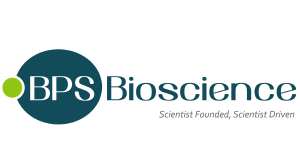BCMA Knockout MM.1S Cell Line
BCMA Knockout MM.1S Cell Line
Artikelnummer
BPS82687
Verpackungseinheit
2 vials
Hersteller
BPS Bioscience
Verfügbarkeit:
wird geladen...
Preis wird geladen...
Products from BPS Bioscience require a minimum order value above 400€
Application: Use as negative control in BCMA-directed cell killing assays.Suitable as a CAR-T or CAR-NK cells B-cell target during optimization of CAR design.
Background: B-Cell Maturation Antigen (BCMA), also known as CD269, is a cell surface receptor of the TNF receptor superfamily that recognizes B-Cell Activating Factor (BAFF). BCMA is preferentially expressed on mature B-lymphocytes and Multiple Myeloma (MM) cells. BCMA is a highly attractive target antigen for immunotherapy not only because of its restricted expression in nonmalignant tissue, but also due to its almost universal expression on MM cells. Pre-clinical studies using CAR (Chimeric Antigen Receptor) T-cells targeting BCMA have demonstrated anti-MM activity, and in 2017, the FDA granted BCMA CAR T-Cell immunotherapy the breakthrough designation in treating Multiple Myeloma.MM.1S cells are multiple myeloma human B lymphoblasts. The parent cell line MM.1 was established from the peripheral blood of a multiple myeloma patient who had become resistant to steroid-based therapy. MM.1S cells are sensitive to dexamethasone.
Description: BCMA Knockout MM.1S Cell Line is an MM.1S B lymphoblast cell line in which BCMA (B-Cell Maturation Antigen, or CD269) has been genetically removed using CRISPR/Cas9 genome editing.This cell line has been validated by genome sequencing and flow cytometry.
Host Cell Line: MM.1S
Mycoplasma Testing: The cell line has been screened to confirm the absence of Mycoplasma species.
Storage Stability: Cells are shipped in dry ice and should immediately be thawed or stored in liquid nitrogen upon receipt. Do not use a -80°C freezer for long term storage. Contact technical support at support@bpsbioscience.com if the cells are not frozen in dry ice upon arrival.
Supplied As: Each vial contains >1 x 106 cells in 1 ml of Cell Freezing Medium (BPS Bioscience, #79796)
Uniprot: Q02223
Warnings: Avoid freeze/thaw cycles
Biosafety Level: BSL-1
References: Greenstein S., 2003 et al. Exp. Hematol. 31: 271-282.
Application: Use as negative control in BCMA-directed cell killing assays.Suitable as a CAR-T or CAR-NK cells B-cell target during optimization of CAR design.
Background: B-Cell Maturation Antigen (BCMA), also known as CD269, is a cell surface receptor of the TNF receptor superfamily that recognizes B-Cell Activating Factor (BAFF). BCMA is preferentially expressed on mature B-lymphocytes and Multiple Myeloma (MM) cells. BCMA is a highly attractive target antigen for immunotherapy not only because of its restricted expression in nonmalignant tissue, but also due to its almost universal expression on MM cells. Pre-clinical studies using CAR (Chimeric Antigen Receptor) T-cells targeting BCMA have demonstrated anti-MM activity, and in 2017, the FDA granted BCMA CAR T-Cell immunotherapy the breakthrough designation in treating Multiple Myeloma.MM.1S cells are multiple myeloma human B lymphoblasts. The parent cell line MM.1 was established from the peripheral blood of a multiple myeloma patient who had become resistant to steroid-based therapy. MM.1S cells are sensitive to dexamethasone.
Description: BCMA Knockout MM.1S Cell Line is an MM.1S B lymphoblast cell line in which BCMA (B-Cell Maturation Antigen, or CD269) has been genetically removed using CRISPR/Cas9 genome editing.This cell line has been validated by genome sequencing and flow cytometry.
Host Cell Line: MM.1S
Mycoplasma Testing: The cell line has been screened to confirm the absence of Mycoplasma species.
Storage Stability: Cells are shipped in dry ice and should immediately be thawed or stored in liquid nitrogen upon receipt. Do not use a -80°C freezer for long term storage. Contact technical support at support@bpsbioscience.com if the cells are not frozen in dry ice upon arrival.
Supplied As: Each vial contains >1 x 106 cells in 1 ml of Cell Freezing Medium (BPS Bioscience, #79796)
Uniprot: Q02223
Warnings: Avoid freeze/thaw cycles
Biosafety Level: BSL-1
References: Greenstein S., 2003 et al. Exp. Hematol. 31: 271-282.
| Artikelnummer | BPS82687 |
|---|---|
| Hersteller | BPS Bioscience |
| Hersteller Artikelnummer | 82687 |
| Verpackungseinheit | 2 vials |
| Mengeneinheit | PAK |
| Wirt | Human |
| Produktinformation (PDF) | Download |
| MSDS (PDF) |
|

 English
English






